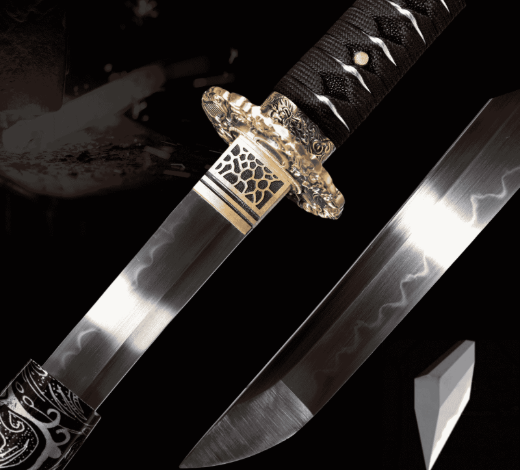The Katana’s Hidden Worth: Why These Japanese Swords Rule the Collector’s World

The gleam of polished steel catches your eye across the auction house floor. A centuries-old katana rests in its display case, its curved blade telling stories of samurai honor and masterful craftsmanship. For collectors worldwide, these legendary Japanese swords represent far more than decorative pieces—they embody living history, artistic excellence, and investment potential that continues to captivate enthusiasts across generations.
Understanding katana value requires delving into the intricate world where metallurgy meets artistry, where historical significance intertwines with cultural reverence. The collector’s market for authentic Japanese swords has experienced remarkable growth, driven by increasing appreciation for traditional craftsmanship and the enduring mystique of samurai culture.
This comprehensive exploration reveals the factors that determine a katana’s worth, from the forge master’s signature to the blade’s historical provenance. Whether you’re a seasoned collector, martial arts practitioner, or cultural enthusiast, understanding these elements transforms how you perceive these magnificent weapons and their place in both history and contemporary collecting circles.
The Soul of Steel: Katana’s Historical Foundation
The katana emerged during Japan’s Heian period (794-1185), evolving from earlier straight-bladed swords into the curved masterpieces we recognize today. This transformation wasn’t merely aesthetic—the curved design represented a revolution in sword-making that balanced cutting power with structural integrity, creating weapons perfectly suited for mounted and ground combat.
Samurai warriors considered their katanas extensions of their souls, following the philosophy that a sword’s quality reflected its owner’s character. This spiritual connection elevated katana craftsmanship beyond mere weapon-making into an art form where master smiths achieved legendary status. Names like Masamune, Muramasa, and Kotetsu became synonymous with excellence, their signatures commanding astronomical prices centuries later.
The katana’s construction required months of meticulous work, beginning with selecting premium tamahagane steel—a material produced through traditional smelting methods that created varying carbon concentrations within the same batch. Master smiths would carefully separate this steel into different grades, using high-carbon steel for the cutting edge and lower-carbon steel for the spine, achieving the perfect balance between hardness and flexibility.
During the Edo period (1603-1868), sword-making reached unprecedented artistic heights as prolonged peace allowed smiths to focus on aesthetic refinement alongside functional excellence. This era produced some of history’s most beautiful katanas, featuring elaborate hamon (temper lines) patterns that demonstrate the smith’s technical mastery while creating stunning visual effects along the blade.
See also: Safety and Technique of Eyebrow Tattoo Removal in Dubai
Forged in Fire: The Art of Katana Construction
Understanding katana construction reveals why collectors prize certain examples over others. The traditional forging process begins with creating tamahagane steel through a 72-hour smelting ritual using iron-bearing sand and charcoal in a clay furnace called a tatara. This ancient technique produces steel with unique characteristics impossible to replicate through modern methods.
Master smiths employ various construction techniques, each creating distinct visual and performance characteristics. The kobuse construction method involves wrapping softer steel around a hard steel core, while the sanmai technique uses three steel types—hard steel for the edge, medium-carbon steel for the sides, and low-carbon steel for the spine. These construction methods significantly impact a katana’s collector value, with more complex techniques commanding higher prices.
The forging process involves repeated heating, folding, and hammering that eliminates impurities while creating the distinctive grain patterns visible in polished blades. Some smiths folded their steel sixteen times, creating over 65,000 layers that contribute to the blade’s strength and beauty. This labor-intensive process explains why authentic hand-forged katanas require months to complete and command premium prices among collectors.
Heat treatment represents the most critical phase, where smiths apply different clay mixtures across the blade before heating and quenching. This differential hardening creates the hamon—the visible line separating the hard edge from the softer spine. Each smith developed signature hamon patterns, from Masamune’s Swords subtle notare lines to Kotetsu’s dramatic gunome waves, making these patterns crucial for authentication and valuation.
The polishing process, performed by specialized craftsmen called togi-shi, can take weeks to complete. This isn’t mere sharpening—polishing reveals the blade’s internal structure, grain patterns, and hamon while removing microscopic imperfections. Master polishers understand how different angles and stone grits highlight specific characteristics, making their work essential for maximizing a katana’s aesthetic and monetary value.
Decoding Value: What Makes a Katana Priceless
Several interconnected factors determine a katana’s collector value, with authenticity serving as the foundation for all other considerations. Genuine Japanese swords carry documented histories, known as origami, which trace ownership through generations and verify the smith’s identity. These certificates significantly impact value, with some rare examples increasing prices by 500% or more.
The smith’s reputation creates dramatic value variations within the collecting community. Blades bearing signatures of legendary masters like Masamune or Kotetsu can command millions at auction, while works by lesser-known but skilled smiths might sell for thousands. The rarity of a particular smith’s surviving works also influences pricing—some masters produced fewer than fifty authenticated pieces, making each discovery extraordinarily valuable.
Age and historical period significantly affect katana value, though older doesn’t always mean more valuable. Blades from the Kamakura period (1185-1333) are highly prized for their innovative techniques and warrior provenance, while Edo period examples appeal to collectors appreciating refined artistry. Meiji period (1868-1912) swords often command lower prices due to declining traditional methods, though exceptional examples still achieve significant values.
Physical condition dramatically impacts pricing, with collectors preferring blades retaining original polish and geometry. Professional restoration can enhance value when performed by recognized experts, but amateur attempts often destroy historical significance and monetary worth. Original fittings—tsuba (hand guard), kashira (pommel), and menuki (ornamental grips)—add substantial value when they complement the blade’s period and style.
Provenance documentation elevates certain katanas into museum-quality territory. Swords with verified connections to famous samurai, historical events, or imperial collections achieve premium prices regardless of smith signatures. These historical associations create emotional connections that drive competitive bidding among serious collectors.
Navigating the Collector’s Path: Legal and Practical Considerations
Japanese sword collecting requires understanding complex legal frameworks that vary significantly between countries. Japan maintains strict export controls on historically significant blades, requiring special permits for international sales. The United States allows katana ownership with fewer restrictions, though some states regulate blade length and carrying provisions.
Authentication represents the collector’s greatest challenge, as sophisticated forgeries flood the market. Reputable authentication services, including the Japanese Sword Society of the United States and various Japanese organizations, provide expertise crucial for serious collecting. Their certificates verify authenticity, attribute works to specific smiths, and assess condition—services worth their substantial fees when purchasing expensive pieces.
Proper preservation techniques protect investments while maintaining historical integrity. Katanas require controlled humidity environments, regular oiling with specific mineral oils, and careful handling to prevent damage. Storage solutions range from traditional wooden stands to climate-controlled display cases, with serious collectors often investing thousands in preservation equipment.
Insurance considerations become crucial for valuable collections, requiring specialized policies that understand sword collecting nuances. Standard homeowners insurance rarely covers high-value weapons adequately, making specialized collectors insurance essential for protecting significant investments.
Building relationships within the collecting community provides access to private sales, expert knowledge, and authentication services. Joining organizations like the Token Society or attending sword shows creates networking opportunities that prove invaluable for serious collectors. These connections often lead to acquisition opportunities unavailable through public auctions.
Temples of Steel: Notable Collections and Museums
The Tokyo National Museum houses Japan’s most comprehensive katana collection, featuring National Treasure blades that represent the pinnacle of sword-making artistry. Their exhibitions regularly rotate pieces from storage, allowing visitors to witness legendary works like Masamune’s “Hocho” and other masterpieces rarely displayed publicly.
The Ames Foundation in Minneapolis maintains one of the world’s finest private collections, with over 1,000 Japanese swords spanning all historical periods. Their research library and educational programs contribute significantly to Western understanding of Japanese sword culture, while their annual symposium attracts collectors and scholars worldwide.
Private collectors like the late Dr. Walter Compton assembled museums-quality collections focusing on specific periods or smith lineages. These focused approaches often yield more cohesive displays while allowing collectors to develop deep expertise in particular areas. Such specialized collections frequently achieve higher per-piece values when eventually sold.
The Sword Museum in Tokyo, operated by the All Japan Swordsmith Association, showcases contemporary sword-making alongside historical pieces. This unique approach demonstrates the living tradition of Japanese sword craft while educating visitors about traditional techniques still practiced today.
Regional museums throughout Japan house exceptional katanas with local historical significance, from the Masamune Museum in Kamakura to various




